#kojima takashi
Photo
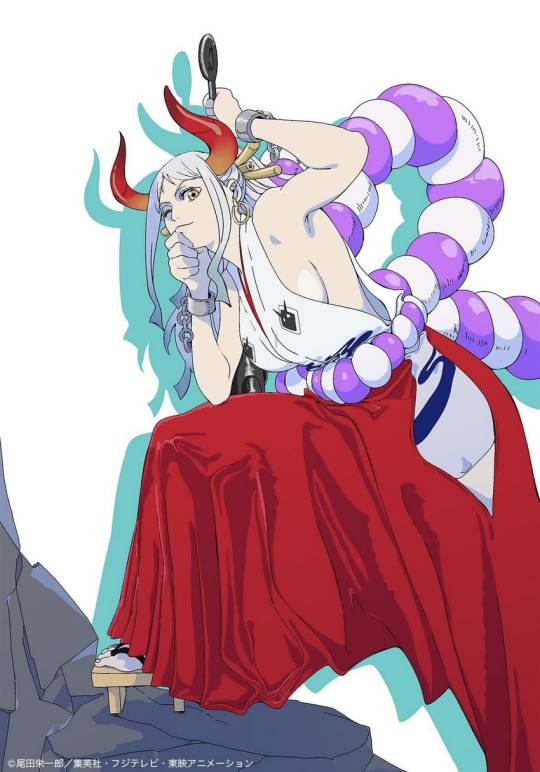
小島崇史/Takashi Kojima (@XlRHGPOxhgGhbNc) / Twitter
41 notes
·
View notes
Text
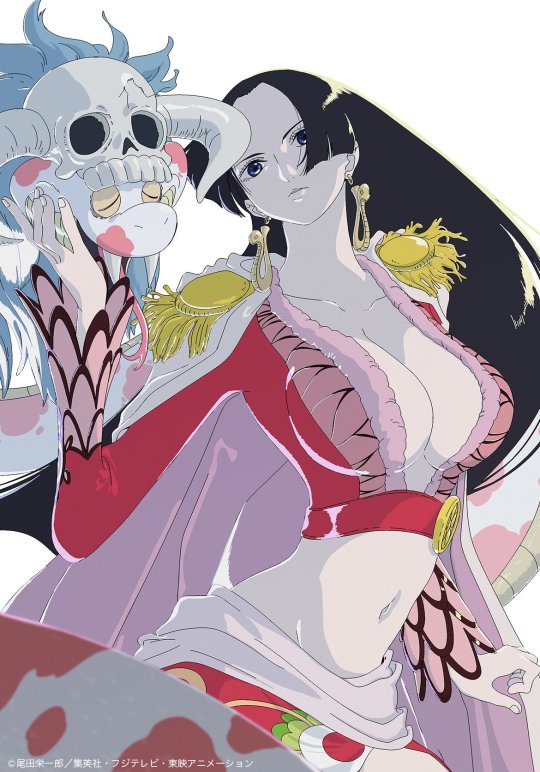
421 notes
·
View notes
Text

Law - By Takashi Kojima for the official One Piece everyday app
335 notes
·
View notes
Text

This shit means something to me man😭
#*insert crying gif*#official art by takashi kojima#he gets it#eren jaeger#attack on titan#eren#shingeki no kyojin#aot#eren yeager#anime#Aot official art
436 notes
·
View notes
Text
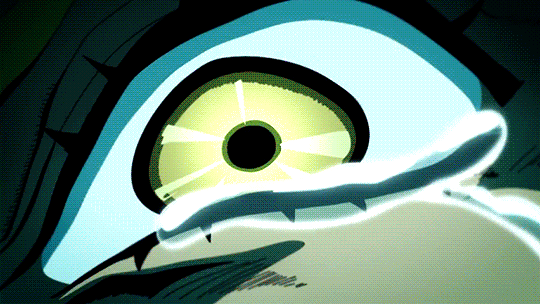
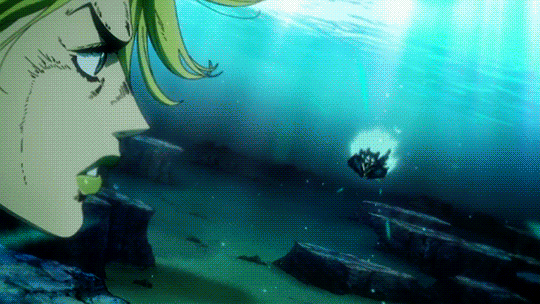

"Bring it, Father Pucci!" - Jolyne Cujoh
JoJo's Bizarre Adventure: Stone Ocean Ep. 37 - "Made in Heaven, Part 2"
#jojo's bizarre adventure#Stone Ocean#part 6#netflix#jjbagraphics#jjba spoilers#stone ocean spoilers#jolyne cujoh#enrico pucci#I AM IN A BUTTERFLY CAGE OF EMOTION😭#JOLYNEEEEE!!!!!!!!!#takashi kojima#my gif
308 notes
·
View notes
Text
Interview of Death Parade Staff - Key Animators
The Appeal of Key Animation and the Joy of Animation Supervision
Animator Roundtable Discussion
Shōsuke Ishibashi / 石橋 翔祐 [Key Animator]
Takashi Kojima / 小島 崇史 [Key Animator]
Ryōta Azuma / 東 亮太 [Animation Director / Key Animator]
Izumi Murakami / 村上 泉 [Prop Design / Key Animator]
— Please tell us about a memorable scene from "Death Parade" that you participated in
Azuma: I have mainly worked on PD Takuya's works, which is how I got involved in Death Parade. I was given the opportunity to be the animation director for episode six, which was a very unique episode. To be honest, I didn't have much experience as an animation director, so key cuts were handled by Kojima-san, Ishibashi-san, Murakami-san, and other skilled animators and artists, who made the important scenes more appealing. Especially Ishibashi-san. His cuts were the first to get delivered, and they had an enormous number of keyframes where Mayu was moving ecstatically with very detailed acting. It was completely different from the keyframes I usually draw, so I was shocked to see how he handled it. It had a positive influence on me.
Murakami: I think Ishibashi-san created Mayu's character.
Ishibashi: No, that's not it. Since I participated in episode six first, Mayu was the first character I animated. I was like, "Huh? Decim hasn’t shown up yet," (laughs). I worked on episode 4 afterwards.
Murakami: When I joined, Ishibashi-san's rough animation was already complete, so I watched the footage and thought, "Mayu is a girl who moves like this," and I understood what to do. Also, Episode Director Shishido was the type to entrust a lot to the animators.
Kojima: Yes, Shishido [Jun]-san's storyboards are very easy to visualize in motion. Speaking of memorable things, in Death Parade, there were many scenes where the space was constructed in 3D, right?
Ishibashi: Yeah, that's right. The first scene I worked on was in front of the bar counter in Viginti in episode six. It was challenging because it was not originally constructed in 3D. But then when I started working on other episodes, I realized that this [3D layout] was easy.
Kojima: Working with 3D layouts means you don't have to draw backgrounds [laughs], which is convenient, but I also worried that neglecting to draw them might make my skills in that area rusty, so I had some doubts about whether it was the right approach.
Ishibashi: I understand that. But drawing so many kokeshi dolls was tough...
Murakami: Oh, I'm sorry. It's my fault that there were so many kokeshi dolls. When I was asked by Tachikawa-san (series composer and director) to design a Japanese-style bar, I thought it would be nice to have lots of kokeshi dolls lined up like bottles of alcohol, so I drew the image board with that in mind...
— PD Takuya and Kurita-san mentioned that Kojima-san broadened the range of character acting in Death Parade.
Kojima: Is that so? That's great to hear. In the first episode we worked on around 55 cuts, and during the meeting, either Director Tachikawa or Director Shishido-san requested that I present the acting with all the intensity of someone emotionally breaking down in tears at a press conference. So, I watched some videos for reference and drew accordingly. When it came to the ninth episode, I was initially consulted about the air hockey scen, but wanting to try something new, I asked to work on the scene where Shimada's sister is assaulted instead.
Ishibashi: I thought you were definitely going to choose hockey, so I was like, "Oh, this is it?” (laughs). The cut with the light glinting on the knife, the acting was so skillful there that we left it untouched and just let it run as it was.
Kojima: (laughs) Well, I can't help but feel like I've been doing nothing but pitiful scenes most of the time. Also, the skating scene in episode eleven was very difficult.
Ishibashi: That scene was mainly handled by Murakami-san, right? I also participated a bit, like drawing the childhood skating scenes.
Kojima: I was allowed to draw the start of the skating scene. I did about 4 cuts in that area.
Murakami: As for me…I am filled with a feeling of wanting to fix it…
Ishibashi: No, you did really well. You had quite a number of cuts, right?Murakami: The number of cuts was around twelve. With everyone's help, we managed to complete it somehow. We had assistance from the 2nd key animation team as well.
— It seems that episode eleven had one of the stricter schedules among all the episodes.
Ishibashi: Indeed, I was worried about whether we could really broadcast the episode or not, but the atmosphere in the studio wasn’t tense at all, and I felt very good. It was more like, "Can we do it?" rather than "Oh no, oh no!" (laughs). In the end, we managed to complete it (laughs).
Murakami: While drawing, I kept thinking, "I can't believe this is going to air in a week," "unbelievable."
Ishibashi: I think it was because Kurita-san, PD Takuya, and desk clerk Nakatani (Satoshi) were people who had such a reassuring presence. When I heard laughter coming from their corner, I thought, "As long as Tachikawa-san is laughing, it will still be OK.”
— Who was the easiest character to draw?
Azuma: The dark-haired woman was relatively easy to draw, but Decim was quite challenging to get right. Kurita-san's designs are characterized by having their mouths positioned lower on their jaws, but when I started drawing, I unconsciously kept placing the mouth too high…
Kojima: All the main characters were difficult. Decim especially was a total struggle for me. Personally, I might not be good with characters who lack expressions. I found it enjoyable to draw characters with expressive faces or those in despair.
Ishibashi: I found the dark-haired woman somewhat difficult to draw, but Decim was relatively easier for me. With guest characters, there was some flexibility in altering their faces, which might have been influenced by Kojima-kun's work in episode 1, where he broadened the scope of the acting.
Murakami: I had already given up on trying to make them look on-model (laughs). Kurita-san's characters, when drawn by him, are very beautiful, but if you don't draw them well, the balance gets messed up. It's beyond me... (laughs). Also, in episode six, drawing Memine the cat was challenging.
Azuma: But you were the one who could draw the cat the best. It was really helpful while working as an animation director.
Murakami: Really? I didn't know what to do, so I started with a lot of cat sketches.
Ishibashi: In episode six, Murakami-san drew great facial expressions in the live scene in the C part. Especially when everyone was like, "Yay!" (laughs). Speaking of what left an impression on me, in episode nine where I was the animation director, Hiromi Ishigami-san, Ryoma Ebata-san, Tetsuya Masuda-san, and Akitsugu Hisagi-san participated as key animators, and it was really enjoyable. Ishigami-san is my senior, but it had been about 7 years since I last saw her original drawings, and I was again impressed by how good she is. Ebata-san's presentation of Tatsumi smoking a cigarette and putting it out with his foot had a very good sense of perspective. Ebata-san was also in charge of the part during the ending theme, where the emotions were conveyed amazingly even without any dialogue. And Masuda-san also did a lot of keyframes. I personally like Masuda-san's drawings, so I got excited whenever I received his keyframes... But even though I'm talking so familiarly, I don't actually know Masuda-san at all (laughs).
— So you've only seen his keyframes.
Ishibashi: That's right. So when I came to the studio for the animation meetings, I wanted to meet him... I was saying "Masuda-san, Masuda-san" so much that they thought we were old acquaintances, but no one told me "Masuda-san is here" (laughs). I was shocked (laughs).
Azuma: As an animation director, it makes me happy when I receive wonderful keyframe drawings. This time, there were a lot of good people of a similar age as me who participated, and I was glad that I was able to get a lot of inspiration from them.
Kojima: As for what left an impression... Well, due to certain circumstances, I didn't work inside the building, so I feel like there's a bit of a difference in atmosphere here (laughs). But if I had been working inside, it would have been a bit more enjoyable, so it's a bit disappointing (laughs).
Ishibashi: Kojima-kun and I have worked together at a different company before so I was looking forward to working together again, but when I heard that you wouldn't be joining the company, I was a little disappointed.
Kojima: Since I didn't have many opportunities to meet people this time, I'll try my best to work in the studio next time (laughs).
Ishibashi: (laughs) Speaking of disappointments... Personally, I wish I could have seen more of Kurita-san's keyframes. Like in the first episode, the scene where Decim pulls out the thread. Or in part C of episode three, when Chiyuki does that flourish at the end. Every time I thought, "Who did this!?", it turned out to be mostly Kurita-san (laughs). Kurita-san always talks as if he hasn't done anything, but I thought that was unfair.
Murakami: He did mention he wanted to do keyframes.
Ishibashi: When someone is that skilled, of course they would want to do keyframes. As an animation supervisor, you're in a supportive role, helping with the difficult parts and making sure the characters are on-model, so the keyframes are more exciting.
Kojima: But as a Chief Animation Supervisor, Mr. Kurita, was able to make corrections in a way that preserved the good points of the person in charge of the original drawings, and I think this is one of the reasons why I enjoyed working on this project.
— Murakami-san, is there any particular scene that left an impression on you?
Murakami: Working on the figure skating scenes was really fun, but bowling was also really enjoyable. My previous project [Ace of Diamond] also had sports-related elements. Sports movements are different from everyday actions; they're very straightforward. For example, if you're "throwing a ball," you're solely focused on the act of throwing. That aspect makes your work very focused and exciting. During the bowling scenes, I consciously tried to convey the weight of the ball. However, the fun part is from drawing to the rough animation. When you’re in it, you think, "This might work," but when it comes together as a finished visual, you end up reflecting, "It's not as good as I hoped," right? Ishibashi, isn't that how all animators feel? [Ishibashi laughs]. The linetest is probably the most intense emotionally (laughs). There's no color or anything decided, so your imagination can run wild.
— It seems like the animators had quite a bit of freedom in their drawings, from what I've heard.
Ishibashi: When we were asked to "do this part," there were many areas where we had a lot of freedom. It might have been a bit challenging, but it allowed animators to expand their creativity.
Kojima: It was easy for me too. I really enjoyed the work.
Azuma: Especially with guest characters, since they only appear in that particular episode, I think they were given a lot of freedom to draw. Mayu in episode six, for example, was a character where we were told we could go all out with the comedic, exaggerated expressions, so there was a lot of freedom.
Ishibashi: Mayu's face when she's hit with wind from below was really something (laughs).
Murakami: Yes, there were many cuts where we could do whatever we wanted with the acting.
Ishibashi: When we were asked to "do this part," there were many areas where we had a lot of freedom. It might have been a bit challenging, but it allowed animators to expand their creativity.
Kojima: It was easy for me too. I really enjoyed the work.
Azuma: Especially with guest characters, since they only appear in that particular episode, I think they were given a lot of freedom to draw. Mayu in episode six, for example, was a character where we were told we could go all out with the comedic, exaggerated expressions, so there was a lot of freedom.
Ishibashi: Mayu's face when she's hit with wind from below was really something (laughs).
Murakami: Yes, there were many cuts where we could do whatever we wanted with the acting.
— Looking back on the series, were there any episodes that left a deep impression on you?
Kojima: I like episodes eight and nine. They're a bit gut-wrenching, but there's something about the feeling of hopelessness that I appreciate. You don't see stories like that often.
Ishibashi: I'm quite sensitive, so watching sad stories makes me sad too. I prefer more gentle endings, like in episode three. Also, the farewell between Chiyuki and Decim in episode twelve, that scene made me cry a lot (laughs).
Murakami: When I saw episode twelve, I thought, "I was doing a ‘good story’ anime" (laughs). This series had different vibes for each episode, which was interesting, but episode six had a really good balance... The story was wild, and so was the animation. It was a lot of fun to watch. However, just before it aired, I started worrying, "Did we go too far?" "Is it going to be okay?" Even Shishido-san, who storyboarded it, was worried.
Azuma: Is that so? I thought episode six was interesting from the moment I started working on it (laughs). So, I wasn't worried at all. I was like, "It's definitely going to be fun! Watch it!"
Ishibashi: Actually, what made me wonder if it would be okay was the opening. When I first saw the storyboard, I thought, "Huh? Is this really for Death Parade?" (laughs).
Azuma: Yes, that's right. When I heard the song, I was so excited that I thought, "Oh! (laughs). [Murakami laughs] Overall, this project was challenging, but it was also enjoyable.
━┅━┅━┅━┅━┅━┅━┅━┅━┅━
NOTE: I am not fluent in Japanese! I translated this with the help of a language partner. However, as neither of us are fluent in one another's native tongue, there may be errors in the translation. I typically don't share things I translate in my free time, but since no one has tackled these interviews in nearly 10 years, I figured it was nice to put these out there for folks who may be interested.
#death parade#anime#translation#interview#anime interview#takashi kojima#yuzuru tachikawa#mayu arita#ginti#decim#chiyuki#cloudytranslates
3 notes
·
View notes
Text
youtube
▶️ KIMI NO IRO: IL PRIMO TRAILER DEL FILM È COSÌ BELLO CHE STO GIÀ PRENOTANDO BD E BIGLIETTI DEL CINEMA, ANCHE SE ANCORA NON CI SONO!
La nuova creazione di Naoko Yamada (K-On!, Tamako Market, Liz e l’Uccellino Azzurro, La Forma della Voce, Heike Monogatari) e dello studio Science Saru (Inu-Oh, The Tatami Time Machine Blues) uscirà in Giappone il 30 agosto.
#kimi no iro#anime#film#naoko yamada#science saru#reiko yoshida#takashi kojima#kensuke ushio#drama#music#giappone#your color
2 notes
·
View notes
Text
youtube
repeatedly watching this opening and growing increasingly despondent that this is for a story arc that takes starts like six years into the run of a gacha game that had its english version die in a single year and not like. a normal tales of video game that i could play because its just hitting all the aesthetic beats i like from the series with staggering accuracy
#yoshimichi kameda AND takashi kojima working on this sequence are you KIDDING me.#either one of them would have my attention. both feels like the height of ludicrous indulgence#Youtube
4 notes
·
View notes
Photo

#eren jaeger#eren yeager#mikasa ackerman#armin arlert#jean kirschtein#connie springer#annie leonhart#reiner braun#attack on titan#aot#shingeki no kyojin#snk#takashi kojima#illustration#art#artwork#official art
57 notes
·
View notes
Text
youtube
#Takashi Sugiura#Sugiura#Satoshi Kojima#Kojima#Naomichi Marufuji#Marufuji#Kenta#pro wrestling noah#njpw#Noah#new japan pro wrestling#Youtube
2 notes
·
View notes
Text
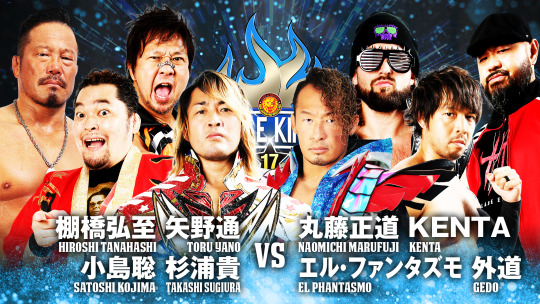
Today is/was NJPW Wrestle Kingdom 17! Hiroshi Tanahashi, Takashi Sugiura, Toru Yano and Satoshi Kojima vs. Bullet Club (El Phantasmo, Kenta and Gedo) and Naomichi Marufuji! Should we cover the show?
#Njpw#new Japan pro wrestling#king of sports#pro wrestling#wrestling#professional wrestling#new japan#podcast#pro wrestling podcast#professional wrestling podcast#wrestling podcast#wrestle kingdom 17#njwk17#wk17#make pro wrestling majestic again#mpwma#hiroshi tanahashi#takashi sugiura#toru yano#satoshi kojima#bullet club#el phantasmo#kenta#gedo#naomichi marufuji
2 notes
·
View notes
Photo

小島崇史/Takashi Kojima on Twitter: "王下七武海ってネーミング最高ですよね。結局強う人たちがなんか集まってるだけでかっこよいんですよねー。幻影旅団やら暁やらなにやら https://t.co/ta9PCax8MW" / Twitter
30 notes
·
View notes
Link
Interview with Suguira and Kojima about their upcoming match with MaruKEN! English subtitles are hardcoded into the broadcast, wait for the interview to start and they’ll be there!
#maruKEN#takashi sugiura#satoshi kojima#pro wrestling noah#yes it is I your local maruKEN watch reporter
1 note
·
View note
Text
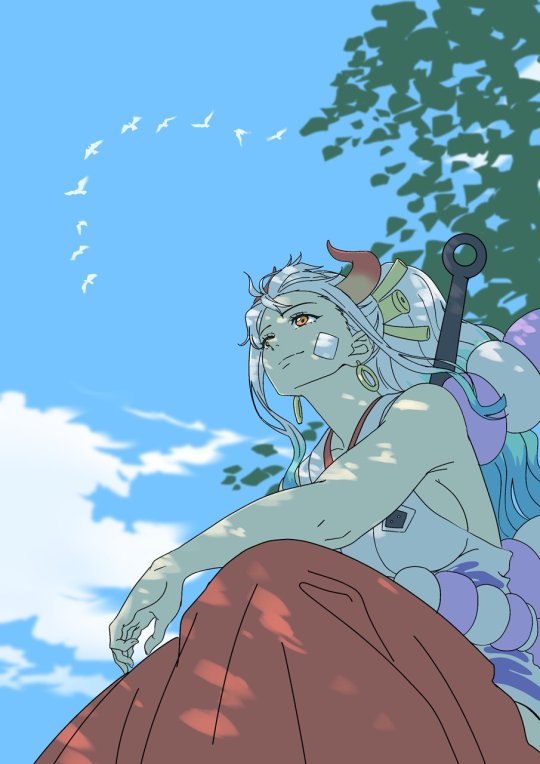
November 3 — Yamato’s birthday! Official illustration by One Piece animator Takashi Kojima!
429 notes
·
View notes
Text
形 KATACHI Form + Focus: Stockholm (SE) vom 26.01. bis 17.02.2024
Die vier ausstellenden Künstler Fumiki Tagushi, Mari Ishikawa, Takashi Kojima und Itto Mishima sind alle mit der Kobe Design University in Japan verbunden. Zuletzt trafen sie sich, als sie während des Melting Point 2023 gemeinsam im González Martí National Museum in Valencia ausstellten. Ihre künstlerischen und technischen Fähigkeiten sind besonders bemerkenswert.
Fumiki Tagushi: Brosche aus der…

View On WordPress
#angewandte Kunst#Blickwinkel#Brosche#Form#Fumiki Tagushi#Handwerk#Handwerkskunst#Itto Mishima#Japan#Kobe Design University#Kunst#Kunsthandwerk#Mari Ishikawa#Perspektive#Schmuck#Schmuckkunst#Takashi Kojima#Werk
1 note
·
View note
Text
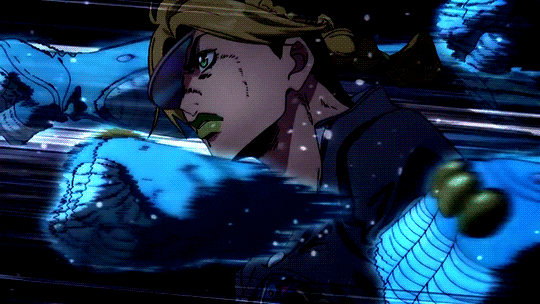
#JoJo's Bizarre Adventure#JJBA#stone ocean#part 6#jjbagraphics#jolyne cujoh#enrico pucci#takashi kojima#my gif
330 notes
·
View notes